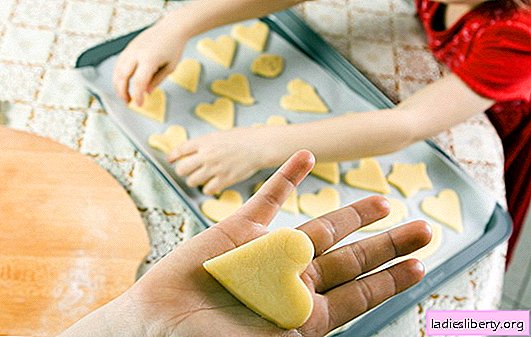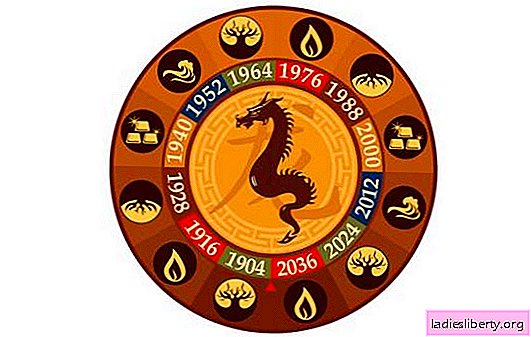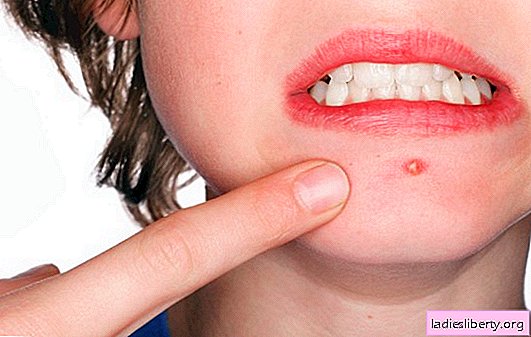
It is impossible to name a specific figure, how many times a person should go to the toilet.
All individually, depending on the amount of fluid you drink, the level of metabolism.
But when is it worth sounding the alarm?
After all, frequent urination can be a variant of the norm, also a symptom of many diseases.
This article describes the main causes, methods of diagnosis and treatment of this condition.
What is polyuria?
The amount of urine depends on many factors. The first of these is fluid intake. The more a person drinks, the more often he goes to the toilet.
But this connection is not always traced. Stressful situations, hypothermia, hormonal changes, infectious diseases affect the formation of urine.
In medicine, there is a special term - polyuria, it describes this condition. In women, frequent urination is with and without pain. Discomfort during the trip to the toilet should be alerted, because they indicate diseases of the genitourinary system.
An urgent need to consult a doctor if:
• There is burning, itching, pain on the background of polyuria.
• Urine is cloudy, or there are impurities in the blood, pus.
• Feeling of incomplete emptying of the bladder.
• The general state of health is deteriorating: fever, sweating, an apathetic person, weakened.
• Lower back pain above the pubis indicates inflammation of the internal organs.
The main causes of frequent urination in women
Painless polyuria is observed not only in diseases, it can also be the body’s response to environmental influences.
Common Causes:
• Excessive drinking increases the load on the kidneys, resulting in toilet trips becoming more frequent. In the body there is a circulation of fluid, because the amount of urine depends on the use of water. These values are directly related.
• Some foods have a diuretic effect: cucumbers, watermelon, coffee, tea, cranberries. Because you need to take into account their effects on the body.
• Alcohol, especially beer, leads to dehydration.
• Drugs, diuretics enhance the formation of urine, it is their direct action.
• Tea for weight loss removes excess fluid from the body, so the girl loses a few pounds.
• Stress, anxiety, nervous overstrain reflexively increase the frequency of urging to the toilet.
• In old age, elasticity, functional properties of the urinary system deteriorate. This leads to frequent urination in women, which happens with and without pain.
• Pregnancy. Hormonal imbalance, increased uterus size affect the functioning of the kidneys. In the third trimester, the fetus becomes quite large, it squeezes the bladder, because during this period the desire to go to the toilet occurs more often. If there are no additional symptoms, the urine is not changed, the general condition is not disturbed, there is no need to panic. But for prevention, it is recommended to warn the doctor about this situation, to pass an urinalysis, blood for glucose. Indeed, diabetes often manifests itself during pregnancy.
If polyuria is accompanied by pain, burning sensation, fever, the following diseases should be suspected:
• Cystitis.
• Pyelonephritis.
• Urolithiasis.
• Urethritis
• Reactive bladder.
• Sugar or diabetes insipidus.
• Myoma or uterus prolapse.
• Inflammatory diseases of the female genital organs.
The most common causes of frequent urination with pain in women should be considered in detail, because additional symptoms will help to make the correct diagnosis.
Cystitis
The disease occurs after hypothermia, influenza, measles, rubella, with a weakened immunity. Classical manifestations are frequent painful urination, burning sensation, incomplete emptying. Going to the toilet does not bring relief, after a few minutes you may want to again. Urine eventually becomes turbid. In the treatment of cystitis use antibacterial, antimicrobial agents, uroseptiki. Showing warm bath with chamomile, sage, linden. The amount of fluid is recommended to increase to wash the infection from the bladder.
Urethritis
The clinical picture is reminiscent of cystitis, except that burning, painful sensations are more pronounced at the beginning of urination. Based on the complaint, it is difficult to distinguish between these two diseases, only additional research will help to make an accurate diagnosis. Treatment of urethritis includes antibiotics, antiseptics, anti-inflammatory drugs.
Pyelonephritis
The inflammatory reaction is more often localized on one side. A woman notes a dull pain in the lower back, polyuria with admixture of pus, fever, nausea. The general condition worsens. Over time, arterial hypertension joins. After determining the sensitivity to antibiotics, specific treatment is prescribed.
Urolithiasis disease
In women, frequent urination with or without pain is observed when a stone is localized in the bladder. If it is located higher, on the contrary, urine is not excreted, since the lumen of the ureter is blocked. A characteristic feature of the disease is increased pain after exercise, riding a bike, motorcycle, in a car on a rough road. The stone moves in the lumen of the bubble, causing discomfort. The pain is localized above the pubis, gives in the crotch. Another distinctive feature is the intermittent stream of urine. Urination stops, although the bladder is not completely empty. The doctor chooses the tactics of treatment after detailed examination, visualization of stones. If the size is small, conservative treatment is possible. Coral-shaped stones, the ineffectiveness of drugs - indications for surgery.
Reactive bladder
This organ has its own innervation, in violation of the structures of the central nervous system impulses too often irritate the bladder muscle layer. Such hyperreactivity manifests itself in women with frequent urination with or without pain. Drugs of choice are sedatives, sedatives.
Gynecological diseases
In the pelvis are the organs of the female reproductive system. Some diseases lead to pressure, displacement of the bladder, which is manifested by frequent urination in women with both pain and without pain.
Myoma is a tumor-like growth in the uterus, which can reach large sizes. The neoplasm is growing slowly, because the symptoms appear gradually. In addition to polyuria, patients complain of pain in the lower abdomen of a pulling nature, menstrual disorders, uterine bleeding. If the tumor is large, it can be felt through the anterior abdominal wall, in severe cases - to visually see an increase in the abdomen. Treatment depends on the size of the tumor, growth rate, the general condition of the woman. Hormonal drugs reduce or stop growth. If conservative therapy did not produce results, surgery is performed.
Significant uterus prolapse squeezes the bladder, causing frequent urination with both pain and no pain. The main reason is the failure of the ligamentous apparatus, which supports the uterus in the correct position, weak pelvic muscles. Treatment in most cases, surgical. Additionally, it is recommended to perform exercises to strengthen the pelvic floor, abdominals.
Diabetes
If the frequent urination is not accompanied by pain, the person may not pay attention to him for a long time. Just think, I want to drink more, I often go to the toilet. But this symptom is the first sign of severe endocrine disease - diabetes. It is not necessary to eat a lot of sweets in order to provoke the development of the disease. In most cases, diabetes cannot be prevented. The following manifestations should be alerted:
• Thirst. A person can drink up to 5 liters of water per day.
• Polyuria.
• Fatigue, fatigue, poor sleep.
• Tingling, numbness, loss of sensation on the limbs.
• Wounds, scratches, abrasions do not heal for a long time.
• There may be a smell of acetone from the mouth.
• Itching of the skin, genitals in women.
• Visual impairment.
These symptoms indicate diabetes. A blood test for glucose will help to accurately diagnose. At the initial stages of treatment, the doctor prescribes a special diet with a restriction of the amount of simple carbohydrates, exercise. If the sugar level is not normal, special preparations are shown.
Diabetes insipidus
What to do when thirst and frequent urination do not give calm even at night, and glucose is normal? The answer is simple. These are manifestations of diabetes insipidus, in which the amount of vasopressin decreases. The disease is associated with damage to the central nervous system, because the hormone is produced in the hypothalamus. Tumors, injuries, inflammatory reactions are the causes of the disease. The only treatment is life-long hormone therapy.
Diagnosis of frequent urination with or without pain in women
• General urine analysis. This study is very informative. Determined urine density, color. The presence of leukocytes indicates an inflammatory reaction (cystitis, urethritis, pyelonephritis). Erythrocytes indicate glomeluronephritis, urolithiasis. Protein appears due to a violation of the renal glomeruli.
• Urine analysis according to Zimnitsky allows you to see and calculate the amount of daily urine, its concentration. In diabetes mellitus or diabetes mellitus, it is of low density.
• If a large number of bacteria is detected, they are sown on special media with sensitivity to antibiotics. It is better to prescribe antimicrobial therapy against a specific pathogen, so treatment will be more effective.
• Complete blood count and biochemistry give an idea of the severity of inflammation. Indicative leukocytes, SOY, acute phase proteins.
• Blood glucose is donated to rule out diabetes. If necessary, conduct glucose tolerance test, the determination of glycosylated hemoglobin.
• Ultrasound of the abdominal organs allows you to see the location of organs, their size, the presence of additional structures, changes in structure. Using the study, you can determine the stones in the bladder, ureters, size, shape of the kidneys, uterus, the presence of tumor tumors.
• If diabetes insipidus is suspected, vasopressin levels are determined.
If the doctor suspected a certain disease, he may order an additional examination. For example, excretory urography in case of kidney diseases, fundus examination for diabetes mellitus, MRI of the head with a lack of vasopressin.
Treatment
The doctor carefully examines the problem of frequent urination in women, both with pain and without pain. First, all external factors are excluded that could affect toilet trips: excessive drinking, alcohol, drugs, and hypothermia. Further, the main reason is determined by means of diagnostic measures. Treatment depends on the underlying disease.
Folk recipes
Many herbs, plants help in the treatment of polyuria. These drugs alone will not cope with the disease, but will perfectly complement drug therapy.
Mint decoction
Chop the leaves, chop the mint, 3 tablespoons pour a liter of water, put on the fire, bring to a boil, stirring constantly. Clean in a cool place to cool. Next, strain, take half a cup 4 times a day.
Birch buds
A teaspoon of raw materials is poured with a glass of boiling water, insisting 3 hours. It turns out useful tea from birch buds. In this form, the maximum amount of biologically active substances goes into the infusion. Use 100 ml 3-4 times a day.
Parsley broth
Chop homemade greens, add carrot tops, and grind it. Two tablespoons of raw materials pour a liter of water, bring to a boil over low heat, cook for 10 minutes. After cooling down, drink 50 ml 4 times a day.
Sage
Infusion of sage is prepared very simply. Crushed leaves can be bought already at the pharmacy. Teaspoon pour hot water, let cool. Take 100 ml 3 times a day. Caution! sage is contraindicated during pregnancy, as it can cause miscarriage in the early stages or cause premature contractions in the third trimester.
Collecting herbs
To crushed horsetail field add in equal proportions of silverweed, plantain. Mix two tablespoons of herbs and half a liter of boiling water, the medicine is infused for 3-4 hours. After straining it is ready for use.
Prevention
For women, frequent urination with and without pain brings many problems. In addition to frequent visits to the toilet, it can be disturbed by discomfort in the lower abdomen, thirst, fever. In order to prevent the above manifestations, you need to adhere to several rules of prevention.
• It is recommended to observe intimate hygiene in any case. After all, in women the urethra is short and wide. This allows microbes to easily cause inflammation, the infection often spreads higher, leading to cystitis, pyelonephritis.
• Avoid hypothermia. A weakened immune system will not be able to combat opportunistic flora.
• The optimal amount of water per day is 1.5-2 liters. To avoid stagnation, a sufficient amount of fluid must be excreted in the body.
• At least once a year, visit a gynecologist, even if nothing is bothering you. An elementary blood and urine test will help the doctor notice a latent infection.
• To strengthen the muscles of the pelvis, there are special exercises. Performing them every day can prevent the prolapse of the uterus.
• A cool shower should replace bathing. It perfectly strengthens the immune system, promotes hardening.
• Proper nutrition, refusal of sweets, moderate physical exertion, walks in fresh air will help to forget about such a problem as frequent urination in women with pain and without pain.











